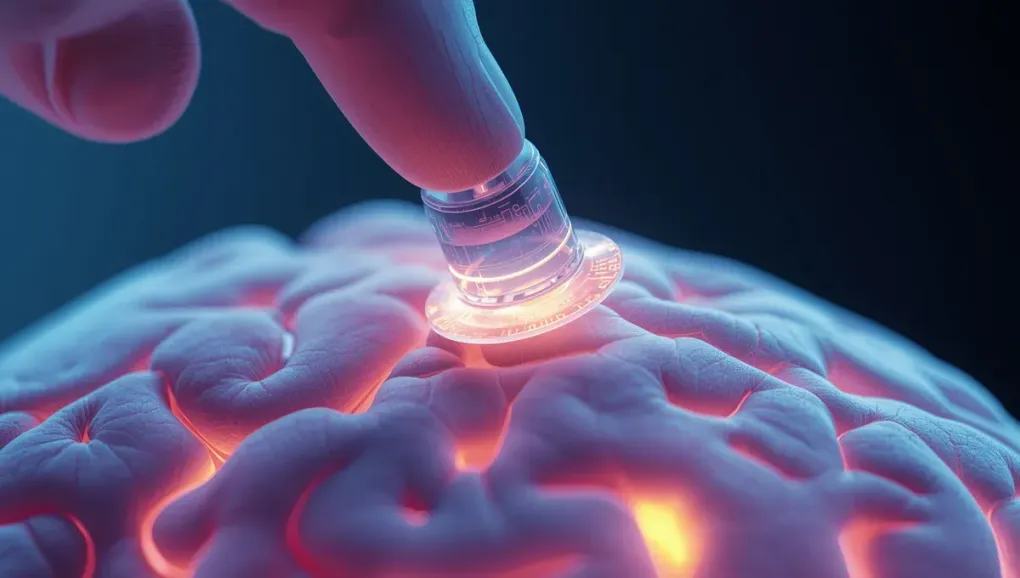
Forget AI: The Real Brain-Computer Interface Revolution is Physical
When we talk about Brain-Computer Interfaces (BCIs), our minds jump to science fiction: AI algorithms magically decoding our thoughts, telepathic communication, instant downloads of new skills. But this is a fantasy that distracts from the real, and frankly more interesting, revolution happening right now. The biggest hurdles to connecting brains with machines aren’t in the software. They’re in the hardware.
The challenge is fundamentally a physics and materials science problem. How do you plug a clunky piece of electronics into three pounds of soft, wet, and notoriously delicate tissue without the body rejecting it? The real work of our BCI future is being done by engineers and material scientists, not just AI gurus.
The Soft Touch: Solving the Brain’s Rejection Issues
For decades, the approach to neural implants was akin to plugging a fork into a bowl of Jell-O. The brain is soft, and our electronics are rigid. This fundamental mismatch causes scarring and tissue damage over time, leading to signal degradation and implant failure. The brain literally heals around the implant, walling it off.
But a new generation of materials is changing the game. Startups like Axoft, born out of Harvard, are creating neural probes that are radically soft and flexible. Imagine electronics as thin and pliable as a human hair. These devices can move with the brain, reducing inflammation and scarring. The goal is to create an implant the body doesn’t even notice is there. This isn’t a flashy algorithm; it’s a breakthrough in biocompatibility, and it’s the key to creating BCIs that can last for a lifetime.
Listening From the Outside: The Non-Invasive Revolution
Perhaps even more profound is the progress in reading brain signals without drilling a hole in someone’s skull. Non-invasive BCIs are the only way this technology will ever become mainstream, and the advances here are quietly staggering.
We’ve had Electroencephalography (EEG) for a long time, but it’s often noisy and imprecise. Now, researchers are dramatically improving it with better signal processing. More excitingly, other techniques are gaining ground:
- fNIRS (Functional Near-Infrared Spectroscopy): This method shoots light into the brain and measures the oxygen levels in the blood to map brain activity. It’s less susceptible to noise than EEG.
- tFUS (Transcranial Focused Ultrasound): This new technique can stimulate deep brain regions with incredible precision, something previously impossible without surgery.
The most game-changing discovery might be from Johns Hopkins University, where they found a way to detect the brain’s neural activity by measuring the tiny, physical deformations of the brain tissue itself. This is a completely new way of “listening” to the brain, and it could make non-invasive BCIs exponentially more powerful.
The ‘Stentrode’ and the Wireless Future
Even when an implant is needed, the methods are getting less brutal. Take the “Stentrode,” a device that can be inserted into a blood vessel near the brain, much like a cardiac stent. It avoids open-brain surgery entirely, instead using the body’s own highways to place its sensors.
Combine these clever insertion methods with miniaturization and wireless technology, and you eliminate the need for cables sticking out of a person’s head. This is the practical engineering that will actually deliver on the BCI promise.
So, what does this all mean? It means the path to our BCI future is being paved with soft polymers, clever optics, and ingenious surgical techniques, not just code. The real challenge is at the physical interface. And while this might sound less exciting than telepathy-as-a-service, it’s far more real. It also opens up a new set of questions: Are we prepared for a world where our brain activity can be read with high fidelity by a device we just wear like a hat? The privacy implications of that are a discussion we need to start having now.


